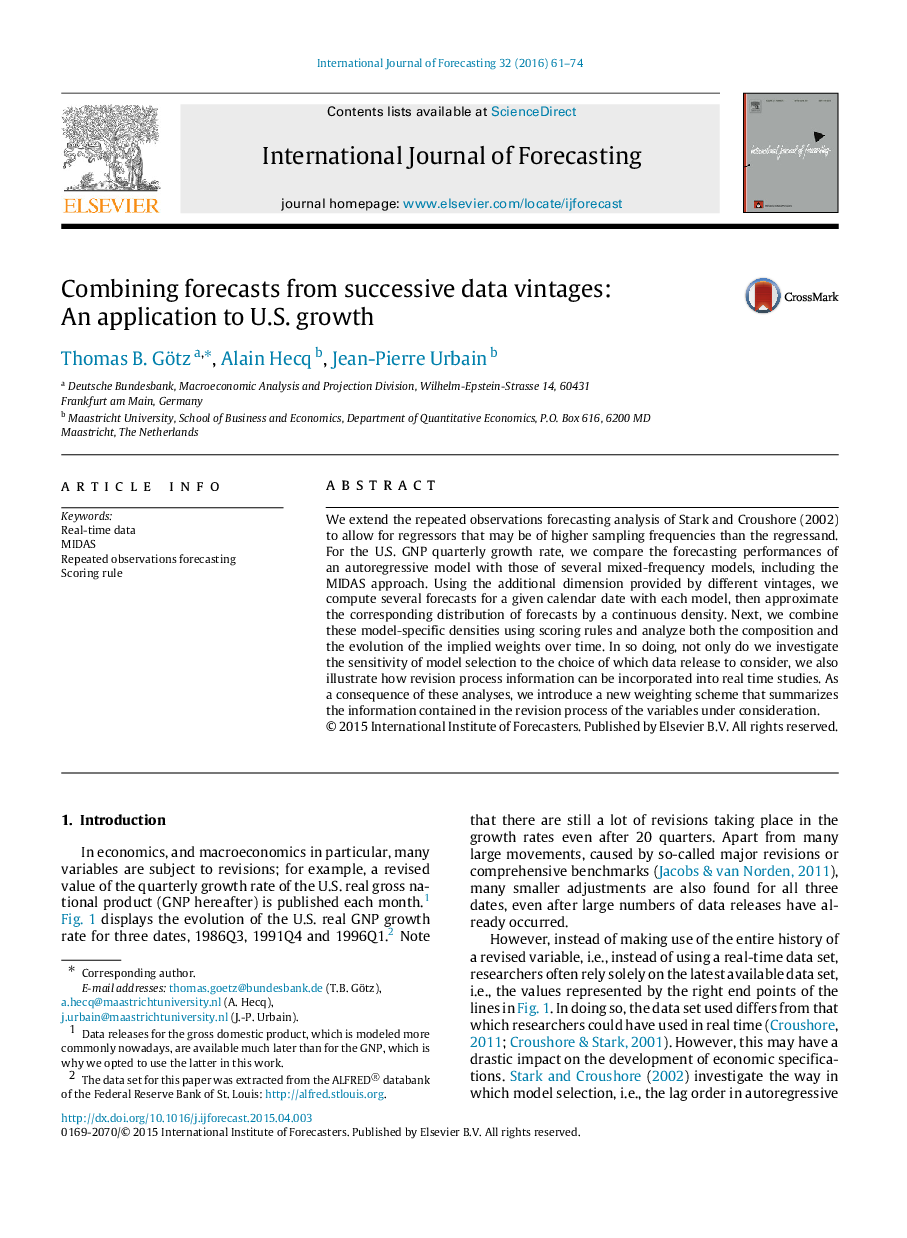| Article ID | Journal | Published Year | Pages | File Type |
|---|---|---|---|---|
| 7408294 | International Journal of Forecasting | 2016 | 14 Pages |
Abstract
We extend the repeated observations forecasting analysis of Stark and Croushore (2002) to allow for regressors that may be of higher sampling frequencies than the regressand. For the U.S. GNP quarterly growth rate, we compare the forecasting performances of an autoregressive model with those of several mixed-frequency models, including the MIDAS approach. Using the additional dimension provided by different vintages, we compute several forecasts for a given calendar date with each model, then approximate the corresponding distribution of forecasts by a continuous density. Next, we combine these model-specific densities using scoring rules and analyze both the composition and the evolution of the implied weights over time. In so doing, not only do we investigate the sensitivity of model selection to the choice of which data release to consider, we also illustrate how revision process information can be incorporated into real time studies. As a consequence of these analyses, we introduce a new weighting scheme that summarizes the information contained in the revision process of the variables under consideration.
Keywords
Related Topics
Social Sciences and Humanities
Business, Management and Accounting
Business and International Management
Authors
Thomas B. Götz, Alain Hecq, Jean-Pierre Urbain,
